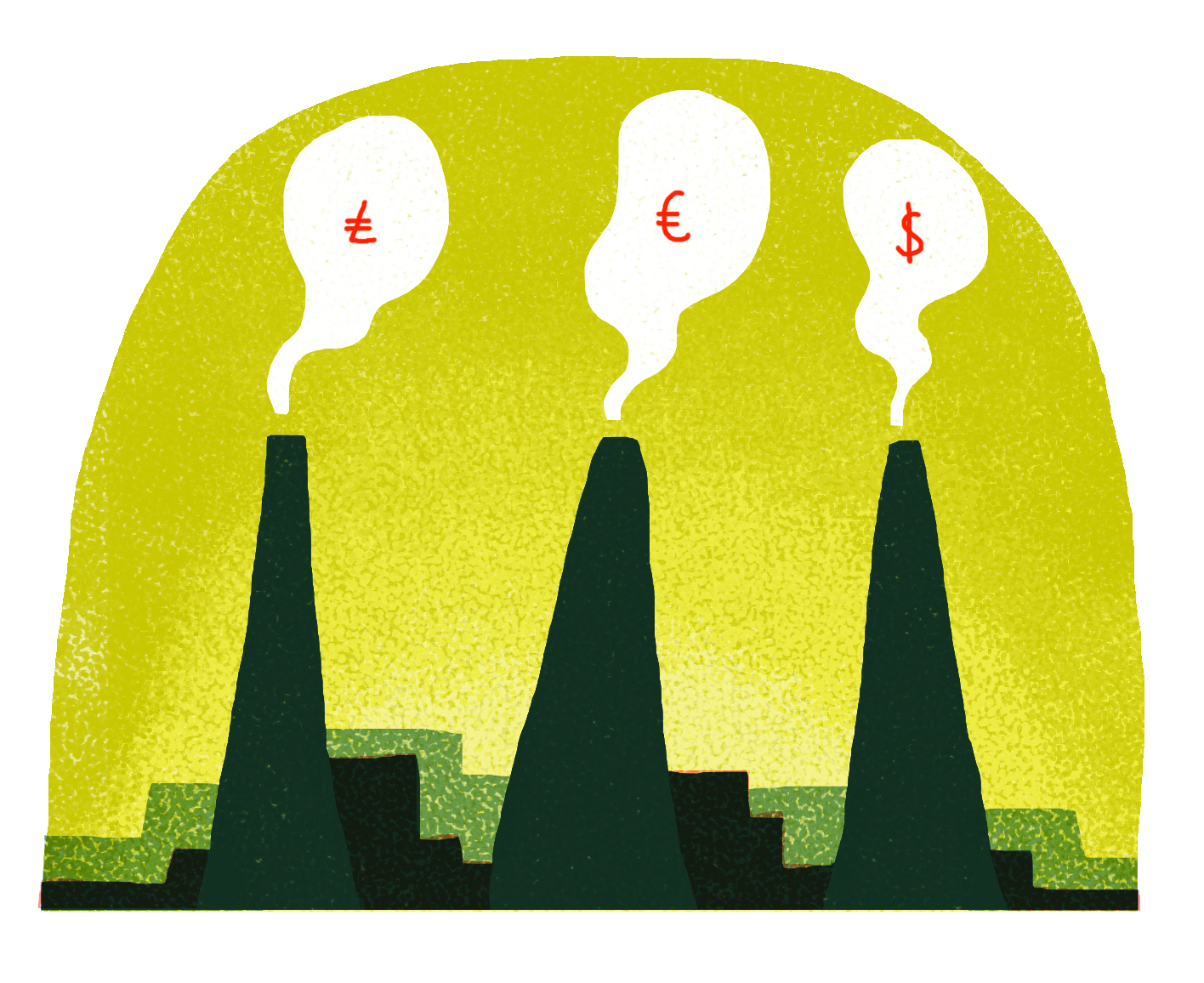
Amidst all the negative news about the COVID-19 pandemic, there is also a silver lining – as in the potential for decarbonization. A recent analysis published in the journal Nature shows that CO2 emissions decreased daily by 17 percent by April 2020 relative to the mean emissions of 2019.
For the first time since the financial crisis in 2010, global CO2 levels have gone down, yet can we see what a sustainable future could look like?
Not really. 2019 emissions are at a similar level to 2015 emissions, and World Meteorological Organization experts predict that there might even be a boost in emissions when business gets back on track. There are also severe social consequences to stunted economic growth, including job and income losses.
It is becoming clear that the current situation is not a model for a climate strategy that is sustainable in the long run. Companies must come up with feasible and sustainable provisions to ensure successful decarbonization. The following provides examples from diverse international companies collected via the Sustainable Business Roundtable, a peer-to-peer learning network founded by ESMT Berlin.
Value your emissions
Understanding the business case for decarbonization comes first. This can be done by valuing different scopes of emissions in the company value chain (from direct emissions from controlled sources, through indirect emissions from the consumption of purchased energy to all other indirect emissions occurring).
Accenture, one of the first companies from the service industry to introduce Science-Based Targets, focused on exactly that and discovered that Scope 3 emissions (indirect emissions occurring in the company value chain) make up the biggest share of total emissions, about 75 to 85 percent on average. For some companies, like car manufacturers, they constitute an even larger share.
At Volkswagen, where Scope 3 emissions constitute 98 percent of the company's total lifecycle emissions, only 2 percent come from production in its factories. Thus, for Volkswagen, decarbonization is about more than the production of electric cars, namely climate-neutral mobility – from the supply chain and production to green charging electricity and recycling.
Three further examples of companies that have already found ways to reduce their carbon footprint give a glimpse of which corporate strategies for decarbonization are needed.
Climate-savvy via carbon pricing
The German manufacturing company Siemens introduced a “carbon fee” on emissions from operations at some of its sites. The idea was to put a price on carbon emission to make people feel the impact the company's behavior had on the climate. The internal carbon pricing also ensured commitment to the company's 2030 carbon neutrality commitment.
Siemens U.K. charged businesses a fee of $17 per ton of CO2 and re-invested the collected funds into energy-efficiency projects at its sites. Employees were asked to suggest their own energy-efficiency projects and, out of the 70 ideas, five were chosen by a panel of internal and external experts.

Assessing the ideas in a “Shark Tank” style ensured employee engagement as well as entertainment. It also meant that there was a considerable surge in innovations from within the company. Once the carbon fee was established, administrative efforts were kept at a minimum by using existing processes to collect the fees. Sustainability managers regularly informed the CEOs and put the fee as an item on board meeting agendas to ensure that management stuck to its resolutions in the long run. Ultimately, internal carbon pricing internalizes arising risks and opportunities in today’s business decisions.
Another step in decarbonization: Decouple growth from emissions
A different example on how to successfully reduce carbonization is the Swedish furniture giant Ikea. It has pledged to become climate positive by 2030 “by reducing more greenhouse gas emissions than the Ikea value chain emits while growing the Ikea business." Currently, the company emits 24.9 million tons of CO2. The largest impact here is the production of materials and the product use at home, as well as customer travels and home deliveries. In order to decarbonize, Ikea will promote sustainable consumption and a circular business, strive toward 100 percent renewable energies, and use more sustainable materials and food. This will be achieved by generating renewable energy onsite as well as off-site (by building wind parks).
The retailer will furthermore increase renewable energy for customer and co-worker transportation and improve overall energy efficiency on its sites. Overall, this is estimated to reduce GHG emissions by at least 15 percent in absolute terms by 2030 compared to 2016. In addition to the reduction of GHG emissions, Ikea has pledged to increase carbon storing in land, plants, and products by improving its management practices in forestry and agriculture.
Becoming carbon neutral is not enough
By far the most ambitious decarbonization strategy was announced by Microsoft in January 2020. Its aim is to be “carbon negative” by 2030 and to remove its historical carbon emissions (since the founding of the company in 1975) by 2050. Microsoft currently emits about 16 million tons of carbon, mainly through the production of purchased materials, product use, business travel, and contractor owned vehicles.
By disclosing its own carbon footprint, Microsoft officials put pressure on its peers as well as themselves to take responsibility. On top of decreasing the company’s own emissions, it has pledged to support and empower suppliers, enlist its employees to contribute to efforts, and use the company’s voice to advocate for needed changes in laws and regulations, such as more investments and the removal of regulatory barriers. Microsoft has also created a $1 billion climate innovation fund. The company will use it to accelerate the development of technologies for carbon reduction and removal technologies as well as to invest in new innovations through equity and debt capital and support key academics and non-profit efforts through philanthropic grants.

The aforementioned companies have invested time and money to research into its own emissions as well as to come up with viable solutions, be it everyday changes, company level actions, or legal and policy-based improvements. It is safe to say that all of them have had to deal with economic decline due to the current pandemic crisis.
Only time will tell, if and when these companies will reach their suggested goals. The silver lining of travel restrictions and economic slow-down due to the COVID-19 pandemic shows that reduction of GHG emissions is possible, if only to a certain level. Decarbonization requires carbon pricing and innovation. It also demands forward-thinking, inspirational strategies and peer-to-peer pressure of companies.
As increasingly demonstrated by business players, there is no shortage of that.
Illustrations by Beth Walrond; Photo credit: Dimitry Anikin/Unsplash

Jeanne Gaebler is the marketing and public relations manager at ESMT Berlin. Joanna Radeke is the manager of the Center for Sustainable Business and Leadership at ESMT Berlin.














